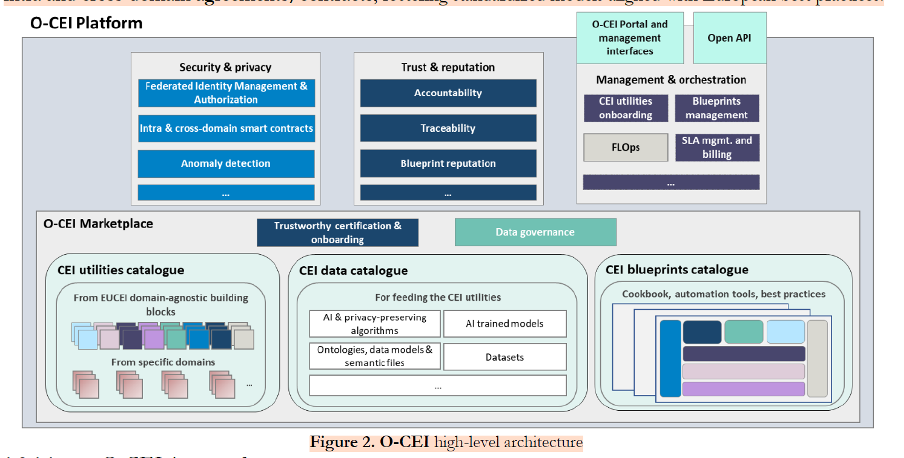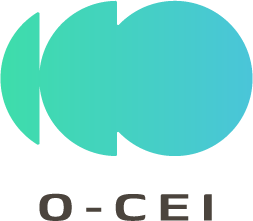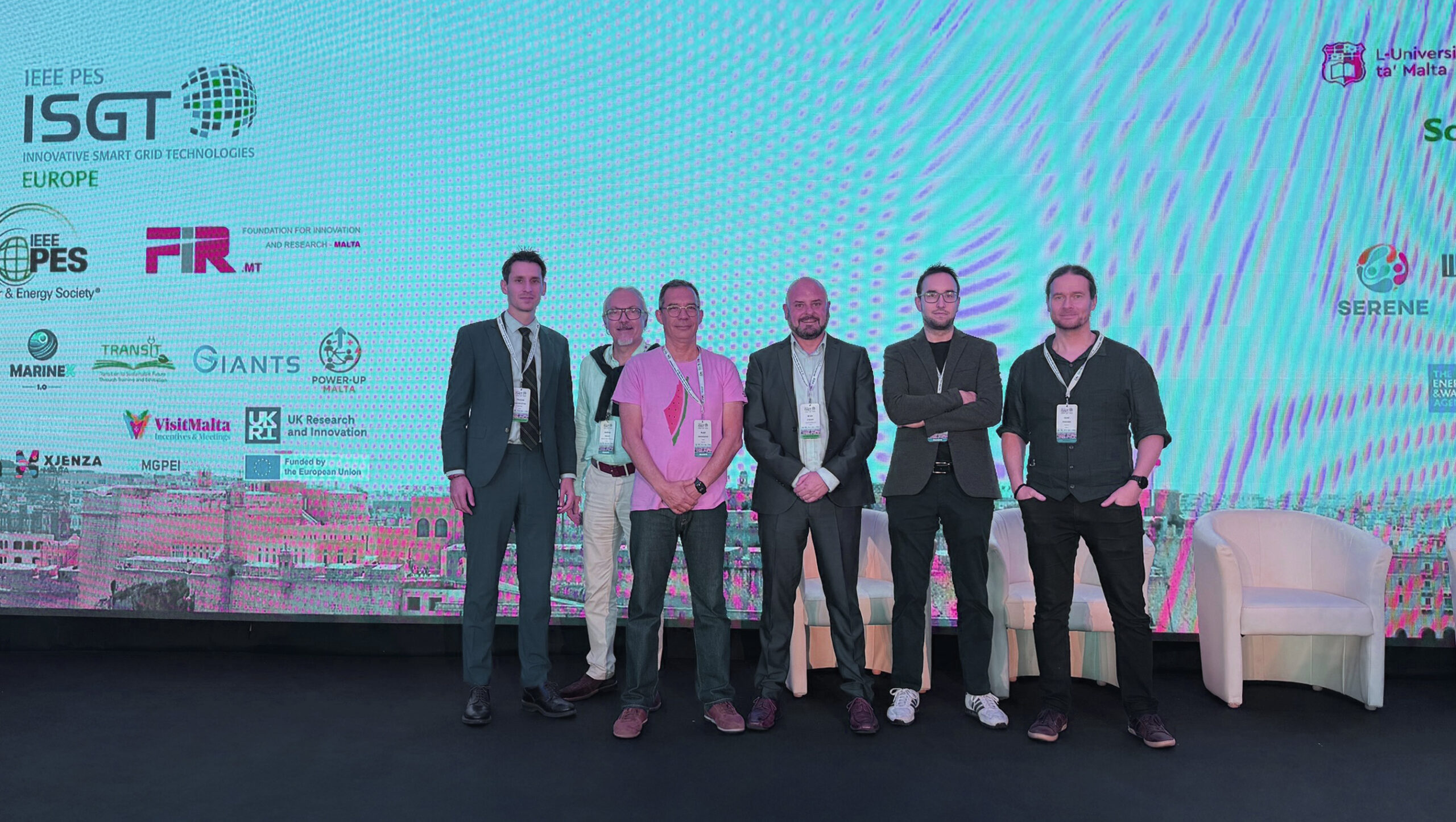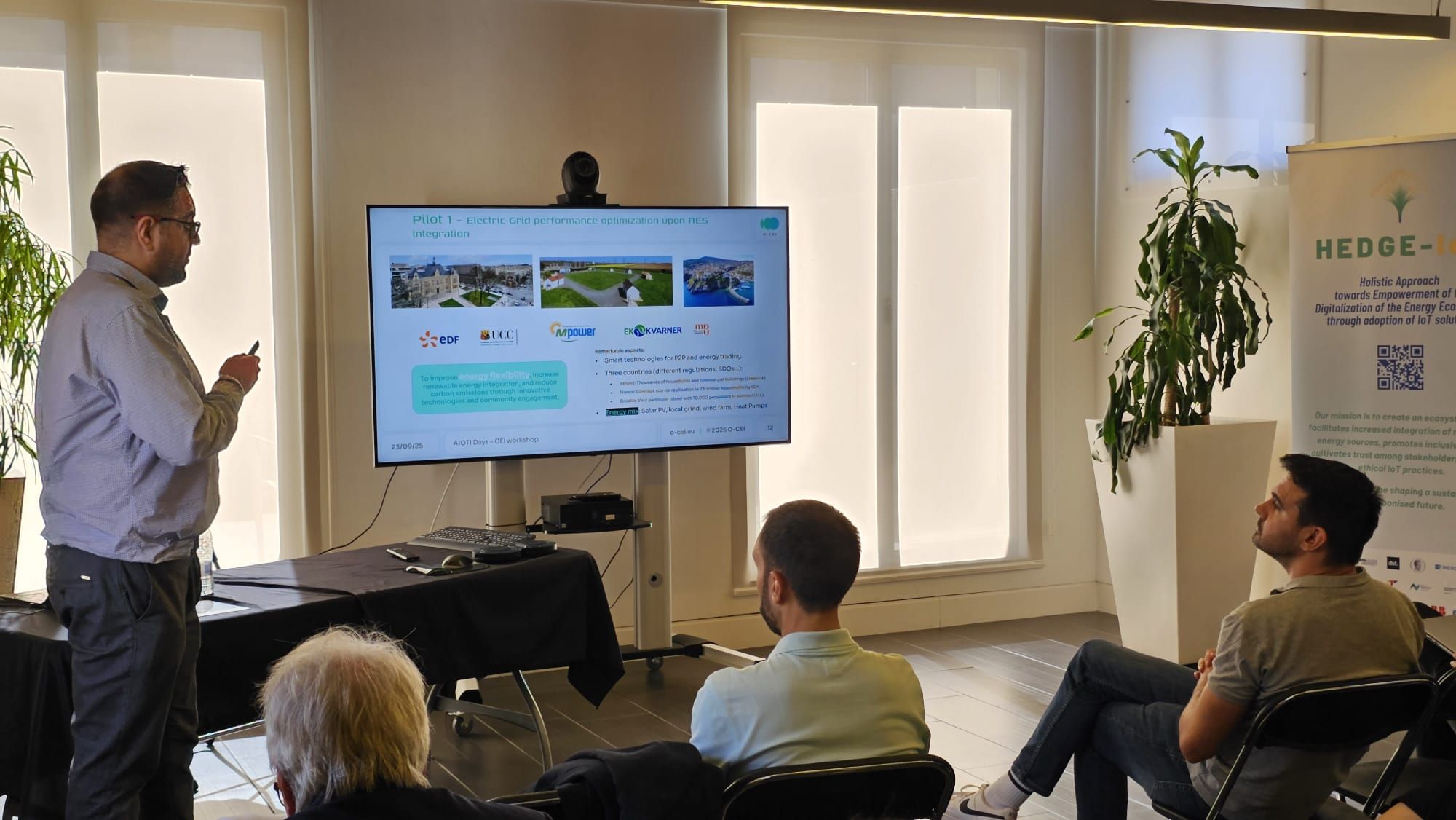WHAT IS O-CEI?
WHAT IS O-CEI?
The growing demand for data and computing power, driven by decentralized infrastructures like Cloud-Edge-IoT (CEI) networks, is significantly increasing energy consumption, costs, and carbon emissions. The fragmented nature of cloud ecosystems, especially when extended to the edge, with a variety of connected devices like e-vehicles and smart devices, makes it difficult to manage resources efficiently. As CEI architectures evolve, there is a clear need to enable seamless collaboration between these independent entities, allowing them to share data and insights effectively.
As a Horizon Europe Innovation Action program, O-CEI aims to create an open CEI platform with a strong focus on interoperability, security, and reliability, making it easier for different sectors to collaborate and share data in real-time. This will enable faster, more accurate predictions in energy flexibility, helping industries to become more adaptable to energy demands. By developing breakthrough technologies and deploying large-scale pilots, O-CEI will support Europe’s transition to a more sustainable and resilient digital infrastructure, paving the way for cleaner energy and more efficient use of resources.
key innovations
O-CEI will build on past investments and developments to establish a competitive market for European businesses and key innovation stakeholders. The main advancements introduced by O-CEI include:
A resilient multi-platform ecosystem for cross-domain data governance, lineage, distribution, and sharing
The project aims to develop an open platform and blueprints for seamless data exchange across computing ecosystems, supporting a marketplace for digital assets like services, datasets, and AI models. It will ensure data confidentiality and trusted authorization while exploring the use of semantic web standards for building knowledge graphs.
Reference implementations, blueprints, and platforms for Cloud, edge, and IoT
The project will create blueprints for CEI scenarios, including formalizations, reference implementations, and automation tools for deployment and operation. It will also produce a toolkit with best practices and lessons learned from real-life applications.
Federated identity management in cross-domain, zero-trusted environments
O-CEI will create an innovative, standardized solution that ensures seamless integration across diverse domains, all while maintaining rigorous security standards.
Distributed Machine Learning (ML) Operations support in cross-domain scenarios, deploying models for energy profiling and flexibility
The project will create a system that helps manage and improve machine learning across different fields, making handling code, data, and learning processes easier. This system will guide decisions about where and how training should happen, focusing on privacy and combining different approaches. Additionally, O-CEI will work on developing or improving energy use and emissions models, which can be applied across various industries.
Continuous automation process of blueprints’ development, integration, and deployment
O-CEI looks to create custom tools to automate the software development process for CEI computing. It will include an AI-powered system to analyze code and improve trust, acting as a smart code reviewer and advisor.
Standards and open standards for the CEI ecosystem
The project will support key standardization efforts, focusing on data sharing, cross-domain interoperability, CEI continuum orchestration (based on aerOS), and smart energy standards.
O-CEI Platform

OBJECTIVES
O-CEI will build on past investments and developments to establish a competitive market for European businesses and key innovation stakeholders. The main advancements introduced by O-CEI include:
To illustrate and demonstrate the capacity of IoT-edge-cloud resource, data, and service orchestration to act as the true backbone of European energy flexibility.
Starting with eight large-scale real-world pilots, the project aims to build an open platform focused on energy flexibility (monitoring, management, and distribution). The platform seeks to enable trusted cross-domain information exchange by utilizing standardized interfaces, data models, and ontologies, thereby supporting the EU’s digital and green transition objectives.
To establish a reference point for deploying CEI platforms and appliances, promoting the use of trusted cross-domain interfaces for data, knowledge, and resource exchange.
The O-CEI platform will include dedicated documentation, automation tools, and management interfaces to support the realization and deployment of new appliances and services (referred to as “CEI utilities”) across the computing continuum. Additionally, the platform will provide interfaces through an Open API, utilizing cutting-edge technologies and relevant specifications to ensure data governance, traceability, confidentiality, and privacy. The goal is to foster trust and sovereignty by limiting access to authorized information and resources, such as datasets and AI models.
To bring together a vibrant ecosystem of technology providers, on-the-field integrators, and real Industry actors to enhance Smart IoT platforms' pervasiveness, successfully channeling previous open-source research efforts.
To develop a viable, transferable business case strategy for an Open Platform on top of a computing continuum.
The project looks to develop credible and viable business models for large-scale pilots and replicate them for commercial success in various contexts. The market adoption of the Open Platform and associated blueprints will be encouraged through the creation of an ecosystem, that looks to promote open collaboration and technology sharing, fostering replication, and sustainability. Additionally, maturity models for computing continuum adoption and sector categorization will guide the replication process
To maximize impact in standardization, dissemination, and communication; and to ensure long-term sustainability and ecosystem development.
O-CEI seeks to engage stakeholders and potential clients across various strategic sectors while aligning with current and future standards in the CEI domain to promote sustainability and mobilize key actors. It will focus on understanding and contributing to standards, with particular emphasis on CEI and energy flexibility use cases.
LATEST NEWS
Stay up-to-date with the latest updates and announcements about the O-CEI project.





